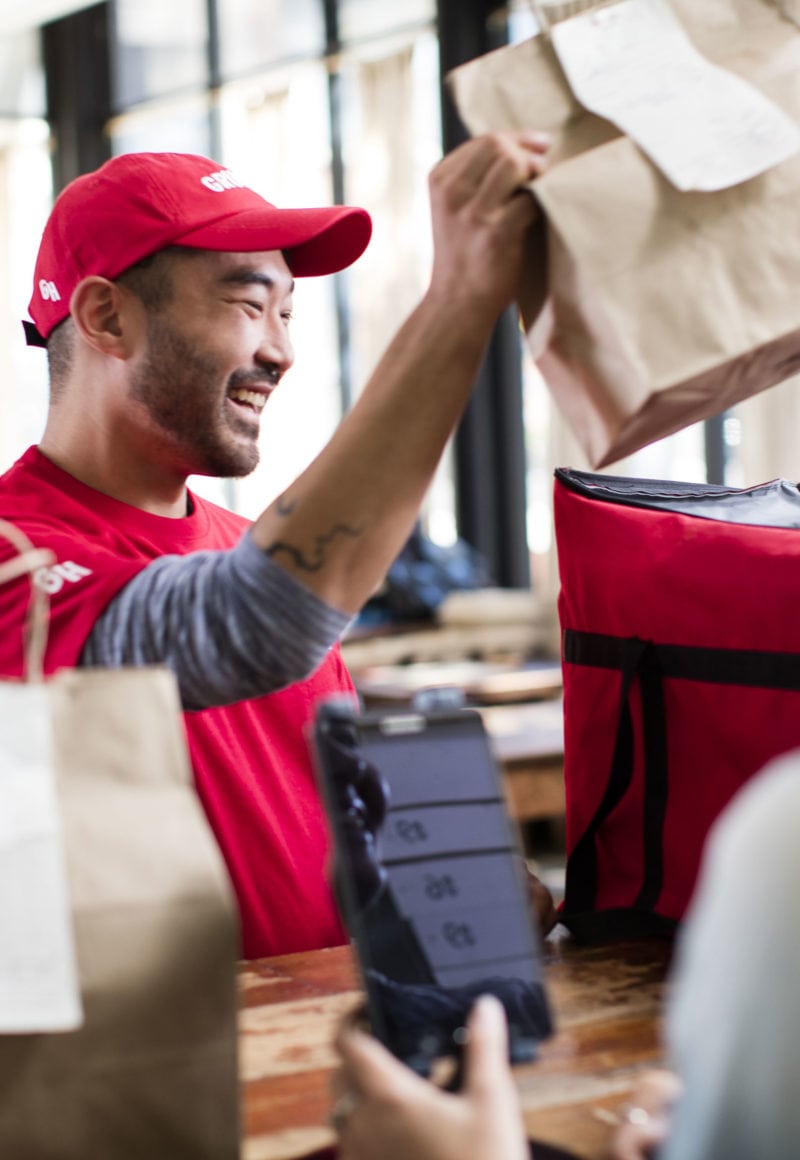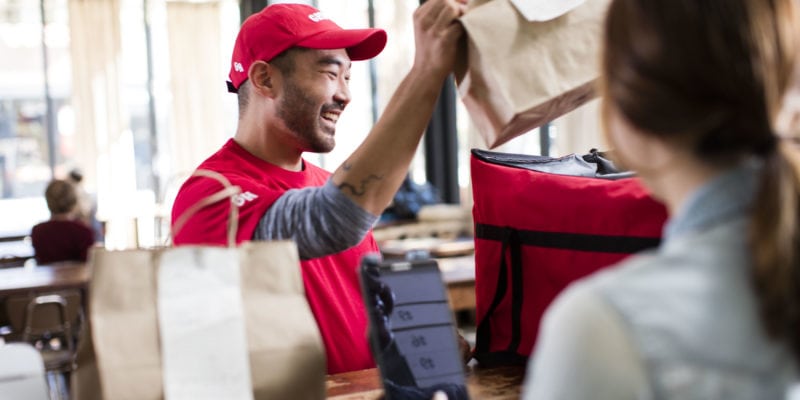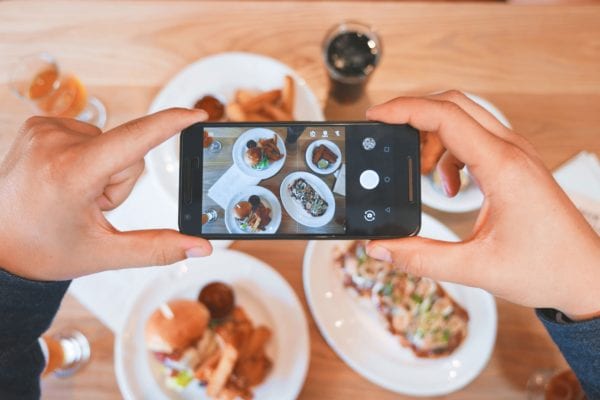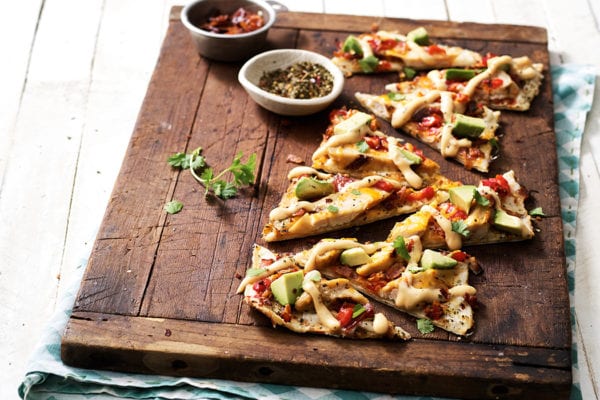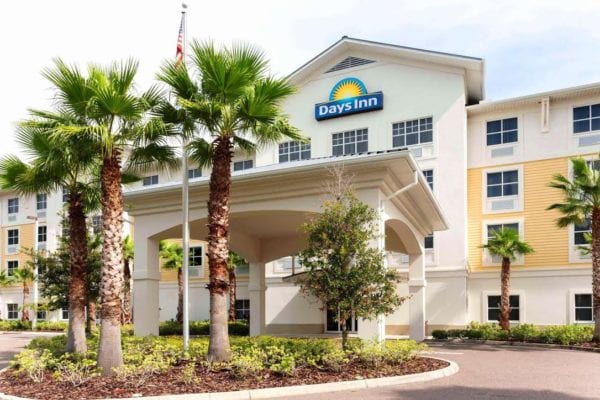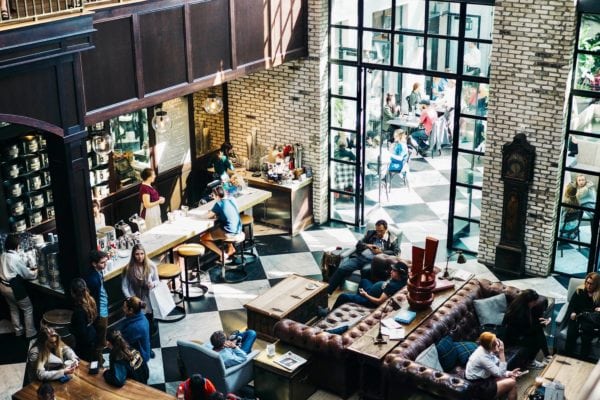Skift Take
The deal, which just closed, provides some insight into both Grubhub and LevelUp’s businesses, but it says even more about the future of restaurant technology.
— Kristen Hawley
In late July, Grubhub CEO Matt Maloney announced Grubhub’s intent to acquire restaurant technology company LevelUp. On Thursday, Grubhub announced the deal had closed.
On the surface, the $390 million cash offer seems almost straightforward: large, public delivery company buys small but popular loyalty technology startup to increase its capabilities. “LevelUp’s world-class technology and team will expedite Grubhub’s integrations with the nation’s top restaurant brands, provide more tools to help them attract new diners and position us to accelerate order growth on the Grubhub platform,” he said on the call.
When Skift Table talked to Michael Hagan, LevelUp’s chief strategy officer, in April, he explained what makes his company attractive to a larger organization like Grubhub. “We’re seeing success because we can say to a [restaurant] brand, you need to be thinking beyond the brand loyalists. You need to be thinking, how do I extend my menu and my ordering capability? And how do I push that into other places that have large audiences?” The company bills itself as a “growth engine for restaurants.” Beyond the quick-hit headlines, though, the deal offers some insight into not only the future of Grubhub’s business but the future of restaurant technology, collectively.
Grubhub Chief Operating Officer Stan Chia Is Speaking at Skift Restaurants Forum. Register Now
In-Store Pickup as Viable Business Extension
Delivery is just one small slice of the pie for most restaurant businesses. In fact, when we talk growth by leaps and bounds in the delivery market, we’re actually talking about something much larger than just a fleet of couriers arriving to transport food from points A to B. Companies like Grubhub and its competitors offer restaurants robust technical solutions handling everything from orders to payment — and pickup is a huge part of this offering.
“Currently, all of LevelUp’s orders are pickup,” said Maloney. “if you think about how the features of LevelUp can potentially grow Grubhub’s platform, the fact that they have 100,000 or so pickup transactions a day is really interesting. We said before, pickup currently is in the mid- to high single digits of our overall transactions, but it’s obviously a huge opportunity.”
Maloney said Grubhub would work hard to take advantage of pickup, especially in markets where curbside pickup is the norm.
More Consumers for LevelUp
LevelUp’s power lies in its white-label technology, thatis, building digital tools for restaurants, not consumers.But when we’re talking building advanced technology and attracting valuable consumer attention, a larger consumer audience is paramount to success.
While you might be familiar with the QR codes associated with restaurant loyalty in in-store locations, LevelUp largely operates in the background. “Many of you are, in fact, already using their platform without even knowing it,” Maloney told investors on the call. (It currently processes over 100,000 daily orders and about $400 million in annualized restaurant sales.)
“One thing [LevelUp] is not able to do is drive demand from a platform the way that we are,” he continued, noting that Grubhub’s marketplace and delivery capabilities have the potential to drive a huge audience to restaurants currently on the LevelUp platform — and those to come in the future.
More Data for Everyone
As Hagan explained in April, the nature of LevelUp is what makes it exciting to consumers. “You can really create magic when you have a beautiful experience with an app and you tie it seamlessly to both payment and loyalty,” he said. “And in a single action you have this customer paying quickly, tracking loyalty, redeeming points and having a beautiful experience.”
Of course, along the path to creating said beautiful experience. LevelUp collects data about you, the customer. For a large company like Grubhub, heavily invested in making sure that customers get what they want when they want it, understanding as much as possible about each customer using the platform elevates the experience. The product can surface restaurant or dish recommendations based on your order history and preferences. It can suggest new businesses to try. It knows which in-store experiences you prefer, and it knows how to speak to you.
Valuable Partnerships With Chain Restaurants
Large regional and national restaurant chains have jumped onto to the online ordering and delivery bandwagon, largely partnering with existing companies to accept and deliver orders. Large chains need efficiency, which often translates to point of sale integration technology. LevelUp’s technology already works with most existing POS systems, giving Grubhub a serious leg up on integration into the highly fragmented market.
According to Maloney, once completed, the acquisition will add more than 200 live clients with point of sale integrations. (In fact, Maloney said that LevelUp’s POS integrations were enough to justify the acquisition on its own.)
A Comprehensive, Forward-Looking Restaurant Tech Company
Combine all of these things and you can start to see the restaurant technology company of the future: it’s thorough and comprehensive; it follows customer behavior online and off, meeting customers where they are.
“LevelUp’s technology and expertise will enable Grubhub to create products that will help restaurants grow while easing the operational cost of managing more online orders. With support for over 10,000 locations of well-known brands on Grubhub right now, and the potential to support tens of thousands more, we see tremendous opportunity to unlock growth and increase efficiency for our partners, maximizing their opportunity across the online channel,” said Maloney.
Grubhub Chief Operating Officer Stan Chia Is Speaking at Skift Restaurants Forum. Register Now

